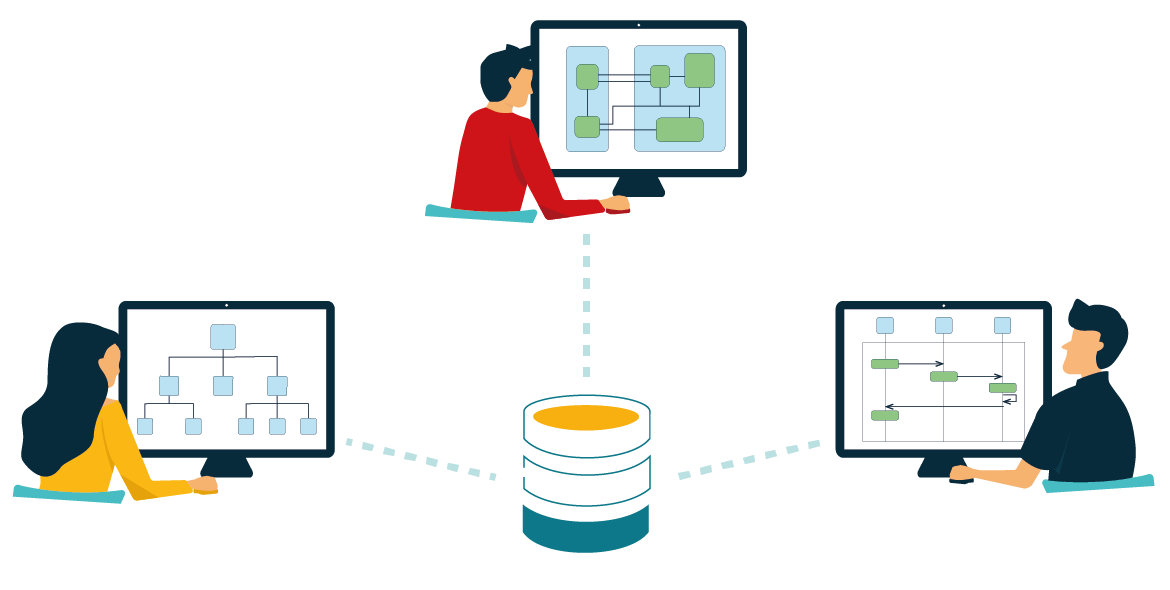Overview
Team for Capella is an add-on that allows users to collaborate on remotely shared models and representations. For this collaboration between users to operate smoothly, Team for Capella relies on the following features:
-
-
Any object being edited is automatically locked and indicated to other users by a specific decorator. Only this object and its closest dependents are locked, allowing other users to continue working on the same model. These fine-grained locks are automatically released as soon as the modifications are saved. This allows several users working simultaneously on the same model.
-
-
-
As soon as a modification on a model element is saved it is automatically and instantly propagated across all users’ views. No need to manually refresh your model in order to retrieve modifications performed by other users: you are always working on up-to-date model elements.
-
-
-
When a user needs to work during a long period on the same set of model elements, he can explicitly lock these elements. The lock will only be released on-demand, as soon as the owner of the lock decides to allow other users to work on these elements
-
-
-
Team for Capella runs on a server shared across all your authorized team members. It can be administered to properly start and stop the system, and see who is currently connected. Models can be stored on one or several database(s) deployed on one or several machine(s).
-
-
-
Modeling projects which are installed on your environment can be exported to the remote repository in order to be shared with other team members.
-
-
-
Projects installed on the shared server can be manually imported into your environment or automatically saved to a backup server.
-
-
-
History of commits is available to see which changes occurred on the shared models. At any time, you can compare two versions to see the differences. You can also see all the model elements and diagrams impacted by several commits.
-
-
-
Data stored in the repositories can be protected by using LDAP to authenticate users, and by using SLL to encrypt the exchanges between the clients and the database(s). It is also possible to define access rights depending on user profiles.
-
-
Flexible licensing mode
-
Our floating licensing mode allows you to deploy Team for Capella in a flexible way, depending on your context and your infrastructure: licenses are floating, allowing them to be shared among several users over time, when required due to low network’s bandwidth, remote desktop mechanism is supported, avoiding you to deploy Team for Capella client on user’s machines, large organizations working with Capella on several projects can deploy Team for Capella server on several machines simultaneously: the licensing mode only controls the number of current connected users, not the number of running servers.
-
-
Server administration with a web interface
-
System administration and project lifecycle management does not require using Eclipse but is handle with a web interface. Indeed, Team for Capella installation can be completed with Jenkins used as a scheduler for various job managing the Capella project shared on a CDO server, such as automatic backups. The server used for sharing Capella project is also managed with Jenkins.
-
